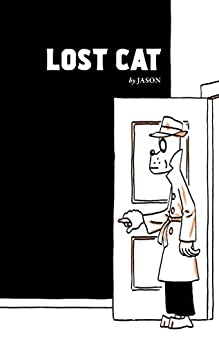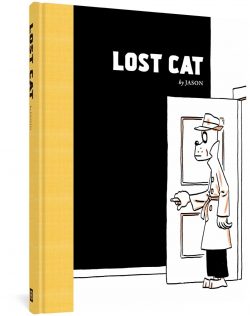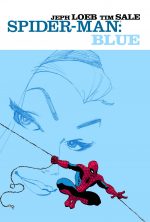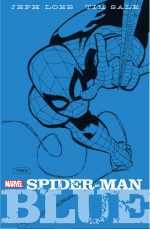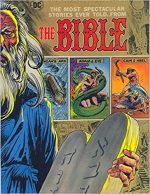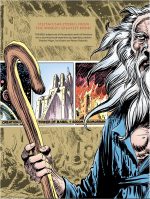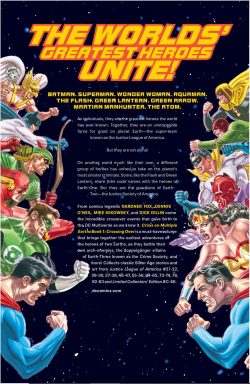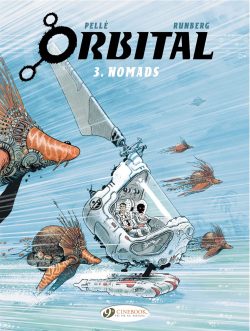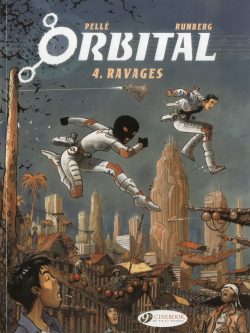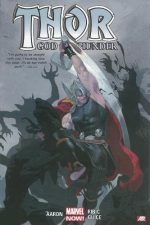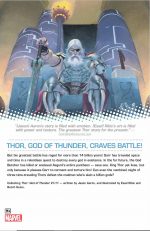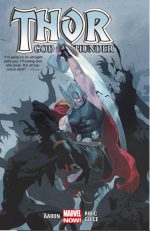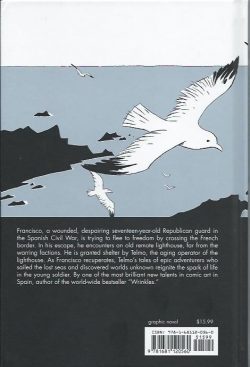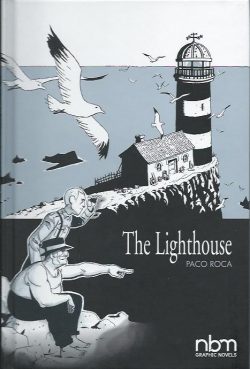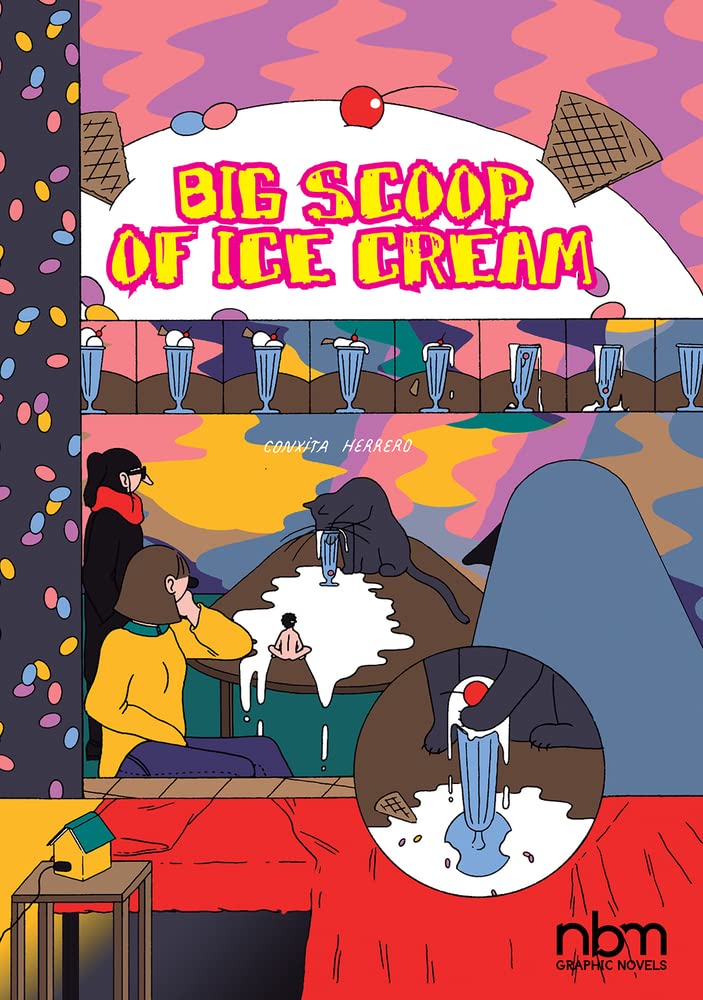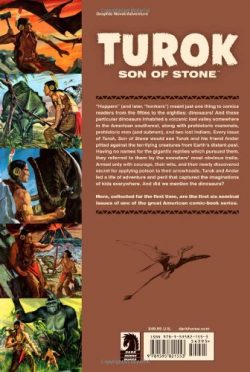
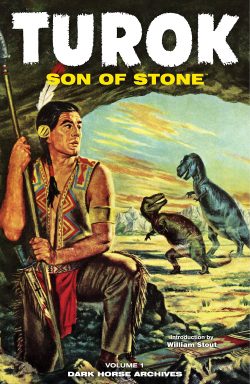
By Gaylord DuBois Ray Bailey, Bob Correa, Jack Abel, Vince Alascia & various (Dark Horse Books)
ISBN: 978-1-59582-155-3 (HB)
By simply never signing up to the draconian overreaction of the bowdlerizing Comics Code Authority, in the late 1950s Dell became the company for life and death thrills, especially in the arena of traditional adventure stories. If you were a kid in search of a proper body count instead of flesh wounds, you went for Tarzan, Roy Rogers, Tom Corbett and their ilk. That’s not to claim that the West Coast outfit were gory, exploitative sensationalists – far from it – but just that the writers and editors knew that fiction – especially kid’s fiction – needs a frisson of danger to make it work.
That was never more aptly displayed than in the long-running cross-genre saga of two Native Americans trapped in a world of sabretooth tigers, cavemen and dinosaurs…
Printing giant Whitman Publishing had been producing their own books and comics for decades through their Dell and Gold Key imprints, rivalling and often surpassing DC and Timely/Marvel at the height of their powers. Famously, they never capitulated to the wave of anti-comics hysteria which resulted in the crippling self-censorship of the 1950s and Dell Comics never displayed the Comics Code Authority symbol on their covers or sought the organization’s nanny-like approval.
They never needed to: their canny blend of media and entertainment licensed titles were always produced with a family market in mind and their comics’ creative staff took their editorial stance from the mores of the filmic Hayes Code and burgeoning television industry.
Like the big and little screen, they enticed but never shocked: keeping contentious social issues implicit instead of tacit. It was a proven case of “violence and murder are fine, but never, ever titillate.”
Moreover, the majority of their adventure comics covers were high quality photographs or paintings – adding a stunning degree of authenticity and realism to even the most outlandish of concepts for us wide-eyed waifs in need of awesome entertainment.
Dell hit the thrill jackpot as the censorship debacle hit its peak, by combining a flavour of westerns with monster lizards: after all what 1950s kid could resist “Red Indians” vs Dinosaurs?
Debuting in Four-Color Comics #596 (October/November 1954) Turok, Son of Stone told of two plains warriors hunting in the wilderness North of the Rio Grande when they became lost in a huge cave-system. They eventually emerged into a lost valley of wild men and antediluvian beasts and would spend the next 26 years (a total of 125 issues) wandering there, seeing sights and doing things kids of all ages would happily die for.
Despite solid claims from historian Matthew H. Murphy and comics legend Paul S. Newman (who definitely scripted the series from #9 onwards) Son of Stone was almost certainly created and first written by Dell’s editorial supremo Gaylord DuBois, and this magnificent hardcover collection gathers both Four Color try-outs (the second originally appearing in #656, October/November 1955) and thereafter issues #3-6 of an eponymous solo title.
Dell had one of the most convoluted numbering systems in comics collecting, and successive appearances in the try-out title usually – but not always – corresponded to eventual early issues of a solo series. Therefore FC #596 is Turok #1, FC #646 became #2 and the series proper began with #3. It isn’t always that simple though: after 30-odd Donald Duck Four Colors, Donald Duck proper launched his own adventures with #26!
Go figure… but just not now…
Set sometime in the days before Columbus stumbled upon America, Turok is a full brave mentoring a novice lad named Andar (apparently the original concept called for two teens, with the mature warrior originally a boy called Young Hawk). In ‘The World Below’ (limned by Rex Maxon), the hunters become lost while exploring Carlsbad Caverns, New Mexico (DuBois was a frequent visitor to that fabulous subterranean site) and after days lost and wandering, they emerge into a vast, enclosed valley where they are menaced by huge creatures they never dreamed could exist.
In ‘The Terrible Ones’ they encounter beast-like cavemen and discover a way to make their puny arrows potent against the colossal cats, wolves and lizards that make human life spans so brief in this incredible world. In return they teach the ape-men the miracle of archery…
One year later, Four Color #656 opened on the morning after in ‘The Mystery of the Mountain’ as caveman Lanok helps Turok and Andar solve a grisly disappearance before the newcomers become lost once more in the great caverns. Eventually emerging at a far distant point of the lush valley, they are befriended by another tribe; one composed only of women and children. The technologically advanced modern visitors helped the primitives recover their men-folk in ‘The Missing Hunters’ and come tantalizingly close to escaping the sunken world forever before their hopes are cruelly dashed…
The format was set and successful. With Turok, Son of Stone #3 (March-May 1956) the pair began decades of constant wandering, seeking escape from the valley, encountering a fantastic array of monsters and lost tribes to help or fight, and illustrated by a succession of artist which included Ray Bailey, Bob Correa, Jack Abel & Vince Alascia.
‘The Exiled Cave Men’ saw them find their way back to Lanok, whose tribe had lately been driven from their home by a gigantic tyrannosaur. As well as helping them find new digs, Andar and Turok give them a further short and profitable lesson in cutting edge weaponry.
Of course the natives didn’t call it a tyrannosaur. The absolute best thing about this glorious series is the imaginative names for monsters. Moreover, although cavemen might have called T. Rexes “Runners”, Allosaurs “Hoppers” and Pterosaurs “Flyers”, whilst generally referring to giant lizards as “Honkers”, us kids knew all the proper names for these scaly terrors and felt pretty darn smug about it…
Relocated to an island in a great lake, Lanok’s tribe marvelled at the coracles and canoes Turok builds to explore its tributaries as ‘Strange Waters’ follows the homesick braves to another section of the valley with even stranger creatures.
Issue #4 opened with ‘The Bridge to Freedom’, finding Turok and Andar escaping the valley, only to turn back and help Lanok, whilst ‘The Smilodon’ pits the reunited trio against the mightiest hunter of all time as a sabretooth tiger takes an unrelentingly obsessive interest in how they might taste…
‘The River of Fire’ opened #5 as geological turbulence disrupted the valley, causing beasts to rampage and forcing Lanok’s tribe to flee from volcanic doom, whilst ‘The Secret Place’ sees Turok and Andar suffer from the jealous rage of the tribe’s slighted shaman. Of course, the witch-doctor turns out to be his own worst enemy…
Issue #6 (December 1956-February 1957) began with an inevitable but fabulously rewarding and cathartic clash as the wanderers face ‘The Giant Ape’; a King Kong-inspired romp with a bittersweet sting before Turok’s initial collected outing ends with ‘The Stick Thrower’ wherein a monkey-like newcomer introduces the lost boys to the magic of boomerangs and the pernicious wilfulness of mastodons…
But that’s not all! For sundry commercial reasons comic books were compelled to include at least three features per issue at this period, so this selection concludes with recovered text vignette ‘Aknet Becomes a Man’ and, just to be safe, ‘Lotor’: a natural history strip starring a wily raccoon looking to feed his brood, despite the best efforts of giant bullfrogs and hungry allosaurs…
With a rapturous introduction from artistic superstar/dino-buff William Stout, plus assorted fact-features that graced the original issues (‘The Dinosauria’, ‘The Ichthyosaurs’, ‘The Smilodon’, ‘The Mastodon’, ‘Turok’s Lost Valley’ and ‘Prehistoric Men’), this is a splendid all-ages adventure treat that will enrapture and enthral everybody who ever wanted to walk with dinosaurs… and Mammoths and Moas and…
Now, if we can only convince the current rights-holders to sanction a fresh release of this and its companion volumes – either physically and/or digitally – we could all travel back and get lost again in the primal Garden of action/adventure Eden…
™ & © 2009 Random House, Inc. Under license to Classic Media, Inc., an Entertainment Rights Company. All rights reserved.

